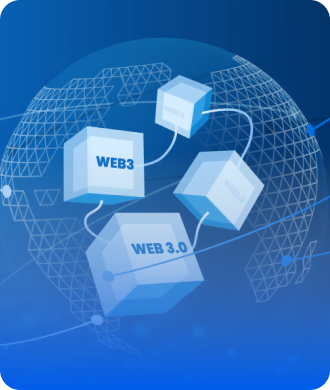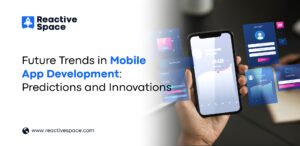
Understanding what users want is key to successful marketing in the fast-growing digital world. Intent-based marketing helps businesses connect better with their audience by providing the right content at the right time. This method is especially useful for generating leads, boosting sales, and creating strong business strategies. In this guide, we’ll explain intent-based marketing and offer practical steps to master it for better sales and marketing.
What is Intent-Based Marketing?
Intent-based marketing is a strategy that targets the needs of potential customers by understanding their intentions at different stages of their buying journey. This approach involves identifying what users are searching for and customizing marketing efforts to match those needs. By focusing on user intent, businesses can create personalized and effective marketing campaigns, leading to better engagement and higher conversions.
Importance of Intent-Based Marketing
Intent-based marketing is important for several reasons:
- Relevance: By focusing on what your audience needs and likes, you can create content that is more interesting and engaging.
- Efficiency: Targeting users based on their intent helps you use your marketing resources better, reaching people who are more likely to become customers.
- Customer Experience: Providing content that matches what users are looking for improves their overall experience, building loyalty and long-term relationships.
- Lead Generation: This approach helps you get high-quality leads by reaching potential customers when they are most ready to engage.
Step-by-Step Guide to Master Intent-Based Marketing
Intent-based marketing involves a step-by-step process. The process includes 6 steps. Each step has its unique quality and importance that needs to be followed.
Step 1: Identify Your Audience’s Intent
The first step in intent-based marketing is understanding what your audience wants. This involves studying the different stages of the buyer’s journey:
- Awareness Stage: Here, potential customers are identifying a problem or need. They seek information and resources to understand their situation better.
- Consideration Stage: At this stage, users are looking at different solutions to their problems. They compare options and search for more detailed information.
- Decision Stage: In this final stage, potential customers are ready to buy. They look for assurance, reviews, and the best deal.
Step 2: Conduct Keyword Research
Keyword research is essential for intent-based marketing. Use tools like Google Keyword Planner, SEMrush, or Ahrefs to find keywords for each stage of the buyer’s journey. Focus on:
- Informational Keywords: Used in the awareness stage by users seeking information. Examples: “How to generate leads” or “What is lead generation.”
- Navigational Keywords: Used in the consideration stage by users exploring specific products or services. Examples: “best B2B marketing strategies” or “top lead generation tools.”
- Transactional Keywords: Indicate strong buying intent. Examples: “buy lead generation software” or “sales and marketing automation tools.”
Step 3: Create Targeted Content
Once you’ve pinpointed the keywords, it’s time to craft content that aligns with those keywords. Here’s the breakdown:
- Awareness Stage Content: Produce informative content like blog posts, how-to guides, and explanatory videos. Aim to provide valuable insights and establish credibility. For instance, you could create a detailed piece on “Effective Business Development Strategies for Startups.”
- Consideration Stage Content: Generate comparison materials, case studies, and reviews. Emphasize the advantages of your offerings and how they stack up against competitors. For example, you might compile a thorough guide on “Top Marketing and Automation Tools for B2B Marketing and Businesses.”
- Decision Stage Content: Present compelling content such as client testimonials, trial offers, and exclusive deals. Make it effortless for potential customers to commit. For instance, you could design a landing page offering a free trial of your lead generation software along with testimonials from happy customers.
Step 4: Utilize Marketing Automation
Marketing automation tools can significantly boost your intent-based marketing endeavors. These tools assist in delivering personalized content on a large scale, tracking user actions, and guiding leads through automated workflows. Key features to consider in marketing automation tools include:
- Email Marketing Automation: Dispatch tailored emails based on user actions and preferences. For instance, if a user downloads a guide on “B2B Marketing Strategies,” you can follow up with related content and product suggestions.
- Lead Scoring: Recognize and prioritize high-potential leads based on their engagement with your content. This ensures that your sales team focuses on the most promising prospects.
- Behavioral Tracking: Monitor user interactions on your website and adjust your marketing strategies accordingly. For example, if a user frequents your “business and advertising” section, you can target them with pertinent offers and content.
Step 5: Optimize Your Sales Funnel
Optimizing your sales funnel for conversions is vital to boosting the effectiveness of your intent-based business and marketing. Here’s how:
- Landing Pages: Create landing pages that match the user’s intent and feature a clear call-to-action. Ensure they load quickly and are mobile-friendly.
- Forms and CTAs: Utilize concise, user-friendly forms and persuasive calls-to-action to capture leads. Offer something valuable, like a free e-book or consultation, in exchange for their information.
- Retargeting: Set up retargeting campaigns to re-engage users who have shown interest but haven’t converted yet. Use personalized ads to remind them of the value your products or services provide.
Step 6: Measure and Analyze Performance
Lastly, monitor the performance of your intent-based marketing to pinpoint areas for enhancement. Vital metrics to watch include:
- Lead Generation: Gauge the quantity and quality of leads produced by your campaigns.
- Conversion Rates: Keep tabs on the percentage of leads that transition into customers at each sales funnel stage.
- Engagement: Track user interaction with your content, such as click-through rates, time spent on pages, and social media shares.
- ROI: Calculate the return on investment of your marketing endeavors to confirm alignment with your business objectives.
Conclusion
Getting good at intent-based marketing and automation is important for businesses. It helps them get more leads, improve sales and marketing, and make strong business plans. By understanding what users want, doing detailed keyword research, making content that fits, using marketing tools, fixing your sales process, and checking how well things are going, you can get some great results.
Boost Your online Presence
Unlock the power of intent-based marketing with our comprehensive guide. Learn how to generate quality leads, enhance sales, and optimize your strategy.
Get Started Now


